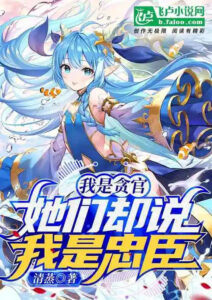< Chapter 21: The Count of Monte Cristo – 1 >
There are countless reasons why a work becomes “great.”
Delicate sensitivity that strikes a chord with the soul, beautiful prose, sharp social critique, or a well-crafted worldview. Literature can achieve greatness for all sorts of reasons.
And “The Count of Monte Cristo” was a piece that stood alongside many “great” classics in literary history, purely on the basis of its entertainment value alone.
“Ah, this is what a novel is all about!”
“When’s the next installment coming out?!”
Even if you look at it through the lens of past lives, “The Count of Monte Cristo” was packed with juicy content.
A breakup with his fiancée thanks to a false accusation, a fiancée snatched away by a friend, dramatic escapes aided by luck, thrilling revenge, and conventional plot developments. This was a novel crafted solely for the sake of “fun.”
Objectively speaking, it had its fair share of plot holes, but pure enjoyment made it impossible to pay any attention to such “extraneous” details.
“Compared to ‘The Count of Monte Cristo,’ other novels feel a bit… dull, don’t they?”
“Yeah, I mean, the writing isn’t bad… right?”
It was essentially the zenith of a revenge story.
There’s no way you could out-fun “The Count of Monte Cristo.”
The cheap magazine “Half and Half” was bought by those who read novels just for kicks.
“Reader poll? Obviously, it’s gotta be ‘The Count of Monte Cristo’!”
Naturally, the results of the reader poll were a landslide victory for “The Count of Monte Cristo.”
Over 90% of readers picked “The Count of Monte Cristo” as the best novel.
The results were immediately transmitted to the authors serializing their works in the magazine.
“Creeeak! No waaaay!”
“A chance to co-write with author Homer…!”
“We need to somehow turn the tables in the next issue…!”
It was truly a boiling cauldron of shock and horror.
* * *
American psychiatrist Elisabeth Kübler-Ross categorized the stages of accepting death into five: denial, anger, bargaining, depression, and acceptance.
The reaction of the aspiring authors to the “Half and Half” reader poll results was pretty much no different.
“They don’t even make up 10% altogether…?”
First stage: Denial.
“Impossible! There must have been some error counting the votes?!”
“It’s rigged! Clearly that Herodotus author tampered with the results!”
“It’s just slow in the beginning… Once the foreshadowing starts paying off, it’ll take off like a rocket.”
Second stage: Anger.
“Grrrr! Why is that author publishing at the same time as us?!”
“It’s not that my work is lacking! It’s just that readers don’t appreciate its true value!”
“That novel has so many plot holes… and its character development is a dumpster fire… this is just too much…”
Third stage: Bargaining.
“Uh, dear author? You did say that if we win first place in the poll, you would co-write with us, but you meant only among us students, right? You’re excluding that ‘Count of Monte Cristo’ from the running, correct?”
“Wouldn’t it be better if you selected the top entry from our group instead? Public popularity is usually just a momentary trend.”
“How about you just collaborate with us…?”
Fourth stage: Depression.
“My novel is trash… I was greedy even thinking I could write with someone as great as Homer…”
“It’s all over! There’s no way I can deal with this gap! Grrr…”
“Ah, my writing is boring… I clearly have no talent for this…”
You’d expect the fifth stage of acceptance would come next—
But defeat wasn’t death.
These were authors brimming with artistic pride.
“There’s still hope! If I can just capture the readers’ attention in next installment…!”
“Haha, maybe I should just kill off all the main characters…”
“I think my story is the most entertaining… maybe next time they’ll finally recognize the fun in my writing…?”
Instead of accepting defeat, the authors started to burn with a frenzied creativity.
And so the authors awakened.
[“Fernand! Among my many names, there is only one that will take you down.”]
On the day the works of these awakened authors were published,
The first act of revenge from the Count of Monte Cristo was completed.
The results of the reader poll were…
“Creeeak!!!”
“I curse you, Herodotus!!!”
Well, I suppose there’s no need for further explanation.
* * *
“The Count of Monte Cristo” was a tale of revenge.
Naturally, the story readers wanted was one of sizzling, absolute retribution. The narrative had previously included thrilling escapes from prison, salvation, and the downfall of bystander Caderousse, all of which were exhilarating to read.
But in the end, a revenge story is a blind chase focused solely on “vengeance.”
And that first act of revenge had been completed. The readers following the story of the Count of Monte Cristo were bound to respond in a big way!
“Ah, this is it! This is why I’ve been sticking with ‘Half and Half’ until now!!!”
“Gasp, this is such a relief I can’t handle it! This beer’s on me!!!”
“Then I’ll get the snacks!”
All the taverns in the Empire buzzed with chatter about the Count of Monte Cristo.
“This is poetic justice at its finest! In the end, all sins are punished! The Count of Monte Cristo’s revenge must be the will of God!”
“Exactly! He’s just getting what he deserves!”
Many people felt a cathartic sense of justice regarding the fate that Fernand, the enemy of the Count of Monte Cristo, had met.
Some were so caught up in the story that they prayed, believing it was all part of God’s divine plan.
“The other enemies need to face terrible fates too!”
“With the Lord backing the Count, what’s there to fear? They’ll all get their comeuppance!”
Numerous guesses were made regarding the fates of the other enemies.
However, the loudest debates in the taverns were about a different topic.
“Now that Fernand’s revenge is complete, the Count should reunite with Mercedes, right?”
“The Count’s love for Haydée was so moving! Naturally, he’ll end up with Haydée!”
“What?!”
“What?!”
Yes, the heroines were the focus of attention.
Nothing gets guys riled up in a tavern quite like discussions about women.
“Mercedes is the Count’s first love! He still holds feelings for her! Obviously, the Count should go back to Mercedes!”
“Hah! To get back together with a married lady who’s already had a child with another man? Are you out of your mind?! Haydée truly loves the Count! She’s the one who should be with him!”
“Haydée is practically a daughter! Marrying someone more than 20 years younger? I question your taste!”
“Are you telling me you prefer an old married woman? Your taste is questionable too!”
“You scoundrel?! That’s a duel!”
“Who’s going to run away?!”
With their opinions so clearly different, these discussions escalated into fights in no time.
The supporters and bets from the crowd soon turned the tavern into utter chaos.
“Giving up on a first love, and you call yourself a man!”
“Chasing after a married woman, and you think you’re a man!”
Over-immersion.
An overwhelming immersion was overtaking the folks around.
The nature of serialized novels only deepened this immersion since the final chapter had yet to drop.
“If you properly read the novel, you’d know that the Count’s heart only has room for Mercedes! Are you sure you actually read the novel?”
“If you’d read the novel, you’d have seen how passionately Haydée loves the Count! Maybe it’s you who skimmed!”
People spun wild predictions, analyzed, and envisioned, layering their imaginations atop one another.
There were plenty of crazies who believed their conjectures to be the actual truth.
A good novel drives people mad. And “The Count of Monte Cristo” was, without a doubt, one of the most entertaining novels in literary history.
Thus, the Empire’s taverns burned for days with blazing arguments over “who should end up with the Count.”
And the plagiarist who set all this chaos in motion…
“Oh, everyone’s written so entertainingly well? Ha, this is what life is meant to be.”
He found joy in reading the works overshadowed by the fervor for “The Count of Monte Cristo.”
* * *
The reason I unleashed the literature of my previous life into this world was ultimately to read even more works.
And at this moment, I was positively thrilled.
The serialized magazine novels, influenced by “Conan Saga” and “The Count of Monte Cristo,” were delightfully entertaining, while the romance novels that had gained popularity after “The Sorrows of Young Werther” were bursting with heartwarming emotion.
A bunch of aspiring authors, who had learned from various short stories, also contributed their unique take on things.
“This is how the world ought to be! Ha…”
While I mentioned to the students that the winner of the “reader’s vote” would get a chance to co-write…
In reality, even if they didn’t snag the top spot, I planned to rope in the students if necessary.
There are so many classics from my previous life that it’d be unreasonable to plagiarize them all.
This magazine serialization was also a means to assess the students’ styles.
“Maybe I should push the students a bit harder. Hmm.”
As I scribbled down memorable snippets onto manuscript paper, I found myself humming a little tune.
Oh, literature, don’t stop.
You’re so beautiful!
You may also like Mesugaki Tank Enters The Academy







